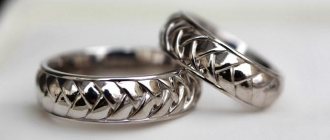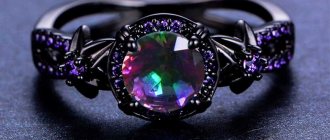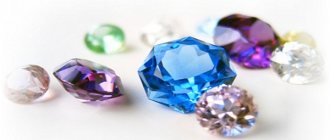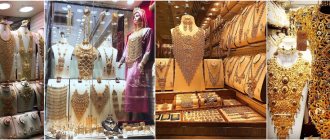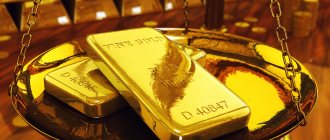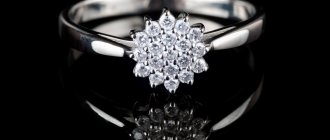Electroplating or galvanization is an electrochemical process of deposition of one metal on another, in an electrolytic environment of aqueous solutions of salts and acids, in which salt molecules, dissolving in water, disintegrate into ions (positively charged - hydrogen and metals and negatively charged - aqueous and acid residues) . When an electric current passes through a solution, positively charged ions tend to the cathode - an electrode with a negative pole, and negatively charged ions tend to the anode - an electrode with a positive pole. The product to be coated is used as a cathode; positively charged metal ions tend to it. Plates of the metal used for coating are used as an anode.
For each type, thickness and quality of coating there is an individual electrolysis mode. All galvanic processes use baths made of acid-resistant materials.
As a result of the electrolytic deposition of metals, a metal film with a thickness ranging from fractions of a micron to tenths of a mm (1 micron = 0.001 mm) is formed on the surface of the jewelry.
Decorative finishing of artistic metal existed already in ancient times. In modern production, galvanizing technology is used to give products additional decorative properties.
Galvanic coatings in jewelry practice are used for two purposes - as decorative and as protective.
In jewelry manufacturing, the galvanization process is used both to coat costume jewelry, usually made from base metals or alloys, with a layer of gold or silver, and to coat silver jewelry with a layer of gold, rhodium, or oxidation. These processes are used for decorative and aesthetic purposes, to impart wear resistance and chemical resistance.
Gilding.
Gilding (gilding) is the application of a thin layer of gold on a product from tenths of a micron to 2-3 microns (1 micron = 0.001 mm) and up to 20-25 microns, not only on products made of base metals, but also jewelry made of silver and gold ( highlighting decorative elements, changing the color of the product).
A 2 micron gold plating layer provides an even, dense, pore-free, wear-resistant coating. The hardness of the coating is more than twice that of any cast gold.
Gilding has always been the most common method of finishing, because gold is one of the first metals known to man. In addition, gold surpasses all other metals in color intensity, softness of shine, depth of tone and stability of decorative qualities.
Gilding is also used to restore gold jewelry and give a more impressive appearance to new jewelry, the so-called “illumination” of the product.
Interesting : In Ancient Egypt they used the so-called. leaf gilding method - 1-3 layers of the finest gold petals were glued onto the prepared surface of the products. This method was widely used in Kievan Rus from the 10th-11th centuries. n. e. Already in the 19th century. in Russia, iron or copper church heads, roofs, and palace spiers were gilded using this method. The service life of gold sheet coatings reached approximately 50 years. Later, they began to use the fire method of gilding - a dough-like paste made of gold amalgam (a combination of gold and mercury) was applied to the surface. When the product (porcelain or metal) was heated, the mercury evaporated, but the dense gold coating remained. The service life of such coatings is 100-150 years. Since the middle of the 19th century. They use the galvanic gilding method. The galvanic method is used not only for gilding, but also for coatings made from compounds of gold with silver, antimony, nickel, cobalt, copper, etc. Such coatings approximately double the hardness of the surface and are a good means of protecting it from corrosion.
The oldest technique is cold gilding. It was also used by jewelers of Ancient Rome. The silver or bronze base was upholstered with thin gold leaf. of gilding over fire has also been known since ancient times . Gold mixed with mercury was applied to the product in a thin layer and fired. Under the influence of high temperatures, the mercury evaporated, and the gold was firmly connected to the base. This method was no longer used after the harmful properties of mercury vapor became known. In 1865, the method of galvanic gilding and silvering , which is still used today.
The layer of gilding depends on the purpose of the decoration. The gilding layer for silver brooches, medallions, and earrings usually does not exceed 1 micron (micrometer, or micron, equal to 0.01 mm). The chains are coated with a layer of 0.5 μm. Partially gilded items are very popular.
In Mendeleev's periodic table of elements, gold is included in the group of noble metals, so named because of their resistance to corrosion and oxidation, i.e. chemical resistance. Gold does not oxidize in air and is stable when exposed to moisture; it does not react with acids, alkalis, or salts. Not affected by hydrogen sulfide. Gold dissolves only in a mixture of hydrochloric and nitric acids - “aqua regia” and selenic acid. Gold is one of the heaviest metals - the density of gold is 19.32 g/cm3. Gold is a very soft, ductile, malleable and malleable metal. Pure gold can be scratched with a fingernail. From 1 g of gold you can draw a wire 3.5 km long. Gold can be forged so that it transmits light. Sheets of gold that are about 0.0001 mm (0.1 µm) thick are called gold leaf. They are used for decorative coverings of altars and church domes. Gold is a good conductor of heat and electricity. Gold is the only metal that, in its pure form, has a beautiful bright yellow color. It has a good shine, which increases when polished. Gilding of metals (in ancient times - the amalgam method, currently - galvanic gilding) is widely used as a method of protection against corrosion (electroplating of contact surfaces, connectors, printed circuit boards with gold) and giving the product an expensive appearance.
Equipment. Relevant for electroplating at home.
Containers for solutions. They will contain our working electrolytes. It is better to choose seamless containers, but this is not a mandatory requirement.
Any polypropylene or polyethylene dishes, jars for spices, scraps of canisters, etc. will do. As a last resort, use new enamel pans until the enamel cracks (after which the steel base quickly corrodes, contaminating the solution, and with severe corrosion, the electrolyte may simply leak out).
Metal utensils, lavsan, PET water bottles or mineral water will NOT be suitable. We hope that more exotic materials such as clay, wood, chipboard have never crossed your mind.
SAFETY. Containers must be sealed and structurally rigid so that they do not “explode” when filled. It is better to check with plain water. To strengthen it, you can put a harness made of wood, metal, or polymer cables around the container.
Current-carrying buses. In the upper part of the container you will need to make cuts for attaching tires or thick wire taken from the wires. The buses will then be connected to the current source. If we want to deposit metal, then one busbar, on which the part will be hung, is connected to (-), the other two to (+), to the left and right of it. The anodes will be placed on them. With anodic oxidation, everything is done the other way around. The cross-section of the busbars must be selected based on the DC amperage - the higher, the thicker.
A copper bar or wire WILL WORK. Both can be found in electrical stores.
Aluminum and steel will NOT SUIT, because... They corrode very quickly and it is impossible to achieve good long-term contact with the part. An exception is electrochemical degreasing, when tires can be made of steel, but must be immersed in a solution.
SAFETY. Tires (-) and (+) must not touch each other. When biting the wire, you need to protect your eyes from small particles. To avoid accidentally short-circuiting the cathode and anode buses, their ends can be insulated with electrical tape.
Anodes (counter electrodes). When depositing metals, anodes are made either from the metal that is being deposited, or insoluble - from stainless steel, titanium, lead. When producing oxides (anodizing), the part itself plays the role of an anode and counter electrodes to it - cathodes, are made, as a rule, from lead and its alloys.
| Any plate made of the appropriate material will SUITABLE. It is better that it is larger, but does not exceed the size of the part to be coated (total area). Otherwise, there is a risk of getting “burnt marks” on the edges of the part. You can hang several counter electrodes on one busbar. A plate made of mixed different materials of unknown composition will NOT SUITABLE. SAFETY. Lead is very toxic. It should not be handled with bare hands or its dust should be inhaled during mechanical processing. Casting lead at home is a very bad idea! A sign of lead ingestion is a sweetish taste in the mouth). |
Electrolytes. A solution in which the reactions we need occur under current. Each process requires its own solution. Some components, such as copper sulfate or battery sulfuric acid, can be bought in the store, others cannot. The electrolyte is obtained after diluting the required reagents in water to the prescribed concentrations. We will look at the compositions of solutions in a separate article.
SAFETY. It is better to work with electrolytes wearing latex or nitrile gloves, always wearing glasses and under a hood. Contact of solutions on the skin is usually not fatal, but there are some that can cause burns (strongly alkaline or strongly acidic). Contact of nitric acid and chromic salts on the skin almost instantly leads to yellowing of the skin. You can store prepared electrolytes in containers similar to working containers. However, it must be hermetically sealed and kept out of the reach of children. Many solutions are colored and children may think it is soda or something tasty. ALL ELECTROLYTES ARE TOXIC TO HUMANS!!!
Electrolytes should not be poured into the sewer, as well as rinsing water after them. This is a punishable action. What to do with them is your personal responsibility!
DC source. You need a device that converts alternating current into direct current. It's called a rectifier. In addition, it lowers the voltage and increases its amperage.
A factory rectifier with smooth current regulation, voltage stabilization and ripple regulation is SUITABLE. But, as a rule, it is unreasonably expensive, in terms of the cost of 1A of current supplied. An excellent replacement is chargers for car batteries. The best solution is ORION. The most powerful of them produce up to 20A at 20V. Their applicability has been tested many times in practice.
Chargers for household appliances and telephones, welding machines (they are not designed for long-term operation under load), rectifiers without adjustment (if you do not equip them with flux chords) will NOT be suitable.
SAFETY. The rectifier is an electrical device, therefore all electrical safety standards apply to it. Do not work with it with wet hands, do not allow solutions, aerosols, or bath exhaust to come into contact with it. In the event of severe oxidation of the components inside the device, it can create a short farewell “fireworks display”.
Mixing devices. Many solutions work better if they are stirred. You can use a simple stick and your hands, but it is better to entrust this matter to “professionals”. So, aquarium compressors are perfect. The larger the volume of the aquarium for which the compressor is designed, the greater the air flow and the more intense the mixing.
An aquarium compressor with smooth adjustment will be suitable. Without adjustment, devices are less versatile and may overmix small volumes of electrolytes, causing splashing.
Any mixers that contain elements that come into contact with the solution and corrode in it will NOT SUITABLE. A mixer is probably not a very good choice, but if you try...
SAFETY. The compressor is also an electrical device, just like the rectifier. We won't repeat ourselves here. What is important is that you need to check it on the required volume of a bath filled with water. It is better to have water splashed in your face rather than a chemical solution if the compressor power is selected incorrectly.
Heaters. Some electroplating solutions work with heating up to 50-60o C. High temperatures are rarely needed. Simply putting a boiler in will not work. It will corrode and burn very quickly. In the event of an insulation breakdown and due to the high electrical conductivity of our solutions, you can additionally receive an electric shock upon contact with the working container. How to heat the solution in galvanization?
WILL SUIT. Aquarium heaters. True, there are hardly any fish that love a hot Jacuzzi at a temperature of 50 ° C. Therefore, such heaters are equipped with thermostats with a very narrow temperature range. You should not remove the thermostat yourself, because... the heater's seal is broken, and they are designed for complete immersion. And yet, if you need a temperature slightly higher than 30 ° C, then they are quite suitable.
You can use a water bath. Place the container with the solution in a pan of water and heat it up. It is important that the solution does not splash into the pan, otherwise a corrosive environment will be created in it over time.
The best option is professional chemical-resistant heaters, but they are not always available and are always expensive.
WILL NOT FIT. Household immersion heaters. For the reasons described above. And you definitely shouldn’t try to place the bathtub on a heating tile.
Hood. It does not directly affect the galvanization process, but makes it safer. The more powerful the better.
WILL SUIT. At home, you can use kitchen hoods, but keep in mind that they are not chemical resistant. The grille in them is generally made of aluminum, which quickly rots from many fumes. You can use duct fans, but you will still have to make an exhaust hood. A powerful solution for the home are MARS fans, which suck out more than 600 m3 of air per hour.
WILL NOT FIT. Floor fans, any ventilation system that can harm other people.
SAFETY. The hood cannot be vented into the general system of the house. Thanks to powerful fans, you will transfer fumes into your neighbors’ apartments. In general, if you are going to work with steaming and aerosol processes, think about it! According to the legislation of the Russian Federation, your installations will be classified as stationary sources of emissions, which entails a huge number of consequences. Responsibility always lies with you, incl. and criminal!
Silvering.
Silvering is the galvanic coating of metals with a layer of silver with a thickness ranging from fractions of a micron (1 micron = 0.001 mm) to tens of microns. A layer of silver is usually coated on base metal items for decorative purposes to give them a more sophisticated look. In Mendeleev's periodic table of elements, silver is part of the group of noble metals, so named because of their resistance to corrosion and oxidation, i.e. chemical resistance. Interesting: Pure silver is a heavy (lighter than lead, but heavier than copper - density - 10.5 g/cm), very ductile silver-white metal. The reflectivity of silver is close to 100%.
The dangers of galvanization.
Galvanization is harmful. Always! If you do not ensure compliance with safety standards, you can cause a lot of problems for yourself and your neighbors. Therefore, electroplating enterprises pay special attention to treatment facilities (purify water) and ventilation (purify air).
You cannot do electroplating on an industrial scale at home, because... This is, firstly, illegal business, and secondly, a regulated activity (Rosprirodnadzor, Ministry of Internal Affairs).
Here are articles about the harmfulness of metals to the human body. Read, draw conclusions.
• General information about the health hazards of heavy metals
• Influence of copper
• Influence of tin.
• Effect of chromium (especially harmful).
• Effect of nickel nickel.
• Effect of NO3— Nitrates.
• Effect of PO43- - Phosphates and pyrophosphates.
Rhodium plating.
Rhodium plating is the application of a thin layer of rhodium, the brightest and most brilliant metal of the platinum group, to the surface of jewelry, 0.1-25 microns thick, to increase their reflectivity and impart special hardness and wear resistance; it gives the metal an intense shine, greatly increasing the reflectivity. light from the surface, making the rhodium-plated jewelry sparkle and shimmer. Interesting: Rhodium is a precious, rare noble metal of the platinum group, superior to gold, silver and platinum in chemical resistance. Chemically resistant, hypoallergenic. Hardness is 2.5 times higher than that of gold and silver. Rhodium plating gives increased strength to the product and protection from weathering (darkening of silver products). Decorative properties - highlighting elements “like white gold”, as well as enhancing the brightness of the color of white gold (since the white gold alloy itself has a slightly yellowish tint). Rhodium plating technology involves applying a layer of more expensive, rare and prestigious noble metal to the jewelry, which gives the surface an exquisite cold shimmer.
Electroplating price.
The first thing you need to understand is that there is no single price for electroplating for all products. Why?
Here is an example: If you specify the price for the coating, say, 60 rubles per 1 kg.
1 kg can be a metal bar, which takes up almost nothing in area. Or it could be unwound wire that takes up half the room. In terms of price, both products will cost 60 rubles. Now imagine how much more difficult it is to coat a wire than a block?
There are indicative prices for standard coatings. They are used by suppliers when it is necessary to estimate the budget for a project. But electroplating enterprises will indicate the final price only when they look at the drawings of the products or the products themselves in person.
You can find prices for electroplating from NPP Electrokhimiya here. Better yet, send your request to the manager.
Oxidation.
Oxidizing jewelry is designed to protect it from tarnishing. The essence of the oxidation process is to apply a chemically resistant protective film to the surface of products, which makes it possible to increase their decorative qualities and corrosion resistance. Oxidation is carried out in two ways: chemical and electrochemical. A distinction is made between colored oxidation and colorless passivation. Products made of silver and base metals are subjected to oxidation treatment.
Oxidation of silver products . Products made of silver and silver-plated are oxidized (passivated) both chemically and electrochemically. The processes of chemical and electrochemical colorless oxidation (passivation) are carried out in solutions and electrolytes, the main component of which is potassium chromate.
In the process of color oxidation, products are colored in a variety of shades: blue, dark (black), gray, light gray, dark brown, brick, yellow, etc. Color oxidation is usually carried out chemically, less often electrochemically.
Oxidation of products made from base metals . In practice, the processes of applying a decorative surface layer to products made of base metals are called patination rather than oxidation. Coating with a layer of patina (oxide and sulfide films) gives the product noble shades of olive green, golden, brown, orange, purple and black. Patination is performed by chemical and electrochemical methods.
For decorative purposes, oxidation (blackening) technology is also used - this is one of the processes of protective and decorative processing of silver, which consists in the formation of a persistent and uniform sulfide film on the surface of silver products. In this way, silver or silver-plated products are coated with a dark coating, sometimes transitioning to a lighter tone. Jewelry with a relief pattern is often oxidized.
Interesting: Very often the coloring of metals is incorrectly called oxidation, although chemically, but not by oxidizing them. Coloring of metals has been known for a very long time, although coloring was mainly done by coating one metal with another. For example, the alchemist Zosimus (IV century after R.H.) describes the deposition of copper on iron objects when immersed in solutions of copper salts; Paracelsus much later (16th century) mentions the silvering of copper objects in a similar way. The metals commonly painted are copper (brass and bronze), zinc, iron, tin and silver.
Decorations
Products made from rhodium-plated silver go well with various precious stones. In terms of price-quality ratio, they are quite profitable.
If you want to be admired, choose silver jewelry with amethysts, topaz, ubins, garnets, and turquoise. Jewelry made of rhodium-plated silver with amber looks very attractive.
They always look chic and attract the attention of others. Rhodium-plated jewelry with cubic zirconia is very similar to jewelry with diamonds, but costs several times less, and in appearance is in no way inferior to diamonds.
Of course, there is more jewelry for women than for men. These can be all kinds of rings, pendants, earrings, bracelets. But representatives of the stronger sex can also be pleased with a ring made of irradiated silver, as well as cufflinks as a gift.
Many jewelry workshops can offer you to make custom-made jewelry from rhodium-plated silver. Such a service cannot be called cheap, but you can become the owner of a unique piece of jewelry.
Products made from rhodium-plated silver cannot be distinguished from platinum. Even an experienced jeweler cannot do this visually.
Platinizing and palladizing.
These are the most modern methods of galvanizing - they are methods of applying decorative coatings, but, as a rule, they are used as a sublayer for rhodium plating. Through platinizing and palladizing, products acquire a bright metallic luster, the external characteristics of the products are significantly improved, the amazing color of the metals perfectly conveys all the precious properties of platinum and palladium.
Protective coatings
allow you to preserve the shine and color of jewelry for a long time (from several months to 2-3 years). Protective coatings (inhibitors) not only protect products from darkening, but also have an excellent polishing effect. For example, protective coatings of silver against darkening (passivation) allow you to preserve the shine and color of jewelry for a long time.
How to care for silver items?
Rings, earrings and chains made of silver can retain their original appearance for decades. To do this, just follow simple recommendations:
- remove jewelry before washing dishes, showering, or other water procedures;
- periodically wipe the product with a soft flannel cloth;
- Rinse with running water approximately once every 1-2 months;
- Do not store jewelry on holders - air accelerates darkening. It is better to use a box or bag made of thick fabric for storage.
If the product does turn black, you can restore its beauty with a variety of available means - from ammonia to lipstick. If you are superstitious, then silver jewelry will have to be periodically energetically cleaned to remove the negativity that has accumulated in them.
Preparation of electrolyte for electroplating
The content of copper sulfate in the solution is 150-180 g/l. Copper sulfate powder is dissolved in hot water and, after cooling and filtering, sulfuric acid is carefully poured into it in small portions at a rate of 30-35 g/l. If the content of copper sulfate in the solution is exceeded, copper sulfate begins to crystallize on the walls of the galvanic container and on the anode, in this case it is necessary to analyze the electrolyte (see “Analysis and adjustment of copper plating electrolyte”) and, according to the results, add water or acid.
An excess of sulfuric acid in the electrolyte can lead to copper deposits that are brittle and fragile. Lack of acid causes the deposition of a loose and porous layer.
To improve the quality of the resulting copper deposits, experts advise adding alcohol to the electrolyte in an amount of 8-10 g/l. Alcohol in a small amount improves the structure of the coating, making the copper finely crystalline, harder and more elastic.
The quality of the electrolyte and the resulting copper deposit may be negatively affected by the possible presence of organic impurities in the solution. To eliminate them, add 2-3 g/l of potassium permanganate or the same amount of crushed activated carbon to the heated solution. After cooling to 18-200C and filtering, the solution can be used.
When used intensively, the electrolyte must be filtered to remove sludge - powdered copper, graphite and dust. Sludge gradually accumulates in the solution, settles on the bottom and walls of the container, fine particles form a suspension that can contaminate the resulting copper deposits. The amount of sludge is influenced by the quality of copper used in the manufacture of the anodes, as well as the increased current density in the process.
The article Analysis and adjustment of copper plating electrolyte discusses the method for determining the content of copper sulfate and sulfuric acid in the electrolyte solution, and also provides a calculation of the number of components.
